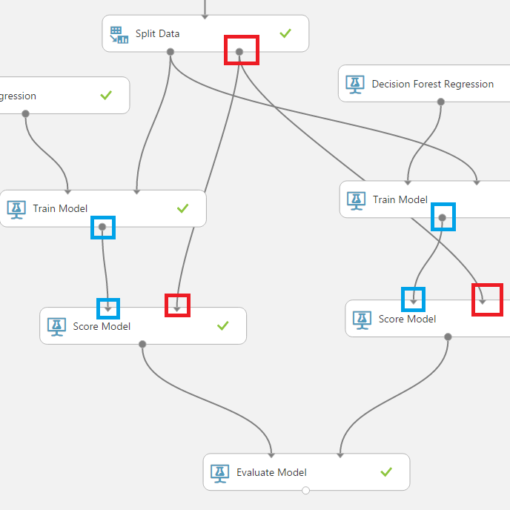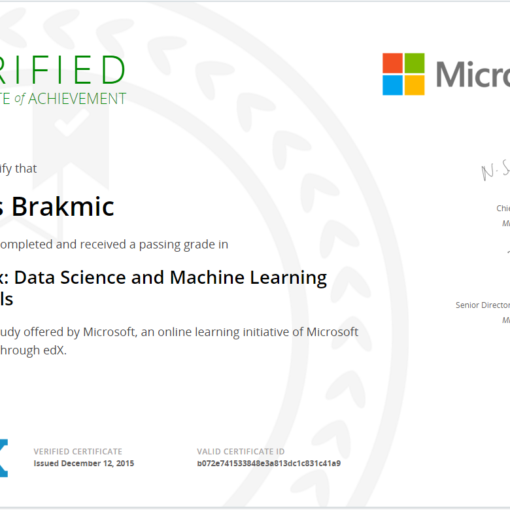A few months ago I discovered a Project from Louisiana State University led by Prof. Kaiser that designs and develops a new execution model for future high performance architectures. It’s called ParalleX and its C++ implementation is named HPX (High Performance ParalleX). It supports operating systems like Linux or Windows and several Build-Toolchains (GNU, MSBuild, CMake etc.). In this article we’ll use Windows 10 x64 and Visual Studio 2015 to build up the base structure of HPX itself plus a small collection of demos showing some of the key aspects of it. The sources can be found here. Building HPX Before we can […]
brakmic
PureScript-Redux is a small library which helps to utilize the Redux state container with PureScript. Although I have almost no experience with React, which is the most prominent ecosystem for using Redux, I thought it would be a nice learning exercise to create a set of Redux-Bindings for writing WebApps in PureScript. Redux itself is heavily, and rightfully so, promoting the benefits of using pure functions for managing the application state and PureScript, being a Haskell-dialect, is a purely functional language. Therefore, it seemed to me very logical to try to combine them together. But because I’m also a PureScript-Beginner and still learning […]
This is an updated version of the original article. I want to thank @joseanpg for the corrections and the idea regarding TextEncoder. Usually, my articles are mostly too long, filled with too many screenshots and philosophy. But this time I’ll try to remain concise and, hopefully, more precise than usual. I’ll refer to Jake Archibald’s article on Web Streams and his prediction that they’ll become the dominant web technology of the Year 2016 (in combination with Service Workers, of course). The article is filled with lots and lots of nice code examples you can basically copy & paste into your browser (some of […]
It’s been a while since I wrote my last article and. Actually, I planned to write the second part of my Scala Crash Course but in the mean time I adopted an orphaned (abandoned?) project called purescript-ractive that’s related to my favorite UI-Library, RactiveJS, and is written in a little, amazing language called PureScript. As many of you already know there are so many different languages that compile to JavaScript. There’s even a COBOL transpiler for JS! Therefore I’ll surely not waste your time discussing the (dis)advantages of Transpiling-to-JS vs. Writing-in-JS. Instead, I’ll try to describe the advantages of PureScript by explaining a small […]
Let me start this article describing the problem I had with finding a proper title for it. As some of you may already know I write a series called “Data Science for Losers” which comprises of several articles that describe different tools, methods and libraries one can use to explore the vast datascientific fields. And just a few days ago, while finishing my Data Science and ML Essentials course, I discovered that Azure ML has a built-in support for Jupyter and Python which, of course, made it very interesting to me because it makes Azure ML an ideal ground for experimentation. […]
In this article we’ll explore Microsoft’s Azure Machine Learning environment and how to combine Cloud technologies with Python and Jupyter. As you may know I’ve been extensively using them throughout this article series so I have a strong opinion on how a Data Science-friendly environment should look like. Of course, there’s nothing against other coding environments or languages, for example R, so your opinion may greatly differ from mine and this is fine. Also AzureML offers a very good R-support! So, feel free to adapt everything from this article to your needs. And before we begin, a few words about how I came […]
Julia is what I’d like Python to be: dynamic but fast like C, supporting strong typing without being dogmatic (in both directions: static vs. dynamic), with a powerful REPL and many modules written in the same language (so I don’t have to switch to C). Julia is still a new language and I suppose not many of us use it currently in production. And yes, Julia is an ‘academic’ language, with a strong emphasis on technical/scientific computing, but honestly, would you rather like to run your business on an ‘anti-scientific’ / ‘anti-technical’ language? Yes, I know, it sounds very polemic because there […]
Sometimes, the hardest part in writing is completing the very first sentence. I began to write the “Loser’s articles” because I wanted to learn a few bits on Data Science, Machine Learning, Spark, Flink etc., but as the time passed by the whole degenerated into a really chaotic mess. This may be a “creative” chaos but still it’s a way too messy to make any sense to me. I’ve got a few positive comments and also a lot of nice tweets, but quality is not a question of comments or individual twitter-frequency. Do these texts properly describe “Data Science”, or at […]
It’s been a while since I wrote my last article. A Big-Data Sorry to my “massive” audience. Actually, I was planning to write a follow-up to the last article on Machine Learning but could not find enough time to complete it. Also, I’ll soon give a presentation in a Meetup (in Germany). A classical example on what happens when you have to complete several tasks at the same time. In the end all of them will fail. But I’ll try to compensate it with yet another task: by writing an article about the brand-new Apache Flink v0.10.0 and its DataStream API. 😀 As always, […]
Douglas Crockford once said that people who finally understand Monads immediately lose the capability to explain them to others. Well, the few readers of this chaotic blog are lucky: neither I understand them nor am able to explain them anyway. However, I can say in advance that a Monad in Scala is something that implements two methods: map and flatMap. Haskell coders (luckily, they’re certainly not reading this blog) now would say: No, there’s no flatMap but only bind written as >>=. Yes, I know but anyway, we’ll stick with flatMap. And to make this article somewhat cooler we’ll use a […]









